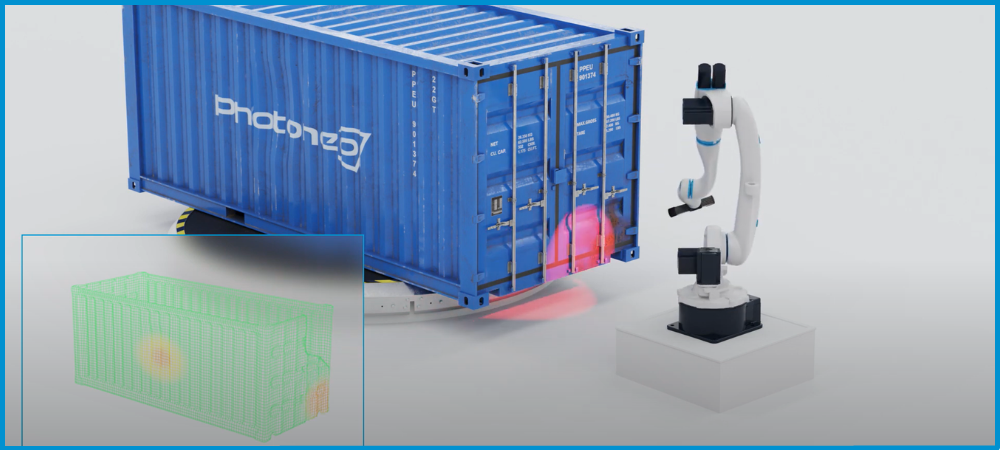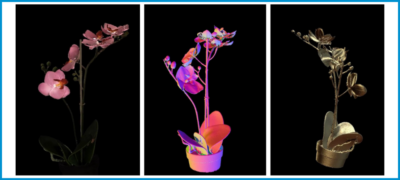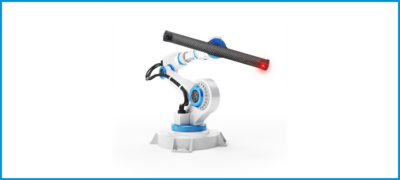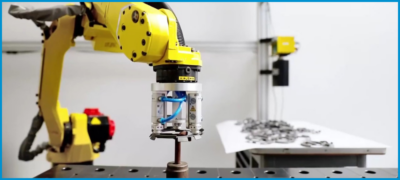
3D machine vision for automated inspection and quality control
Quality control is one of the most crucial processes in any manufacturing workflow. However, as essential as these steps are, traditional inspection methods are often slow and unreliable. 3D machine vision can help automate quality control to improve the process.
The manufacturing sector is no stranger to automation, but many quality inspection workflows are still manual. Preconceptions over AI’s accuracy or trust in human workers may keep some facilities from automating these areas, but today’s technology offers several advantages.
How manual quality control methods fall short
Humans are generally capable of more nuance than machines, which may lead some people to think they’re better at quality control. However, inspections are often more a black-and-white matter than a nuanced one, and manual approaches can easily introduce errors.
People get tired, distracted, and bored and can forget things to look for or company quality standards. Consequently, experts say a 100% manual inspection can only yield 87% accuracy, even under the best conditions. As processes improve and defects go down, people may become complacent and unaware of errors, leading to reduced inspection accuracy as other workflows advance.
Even when manual quality control methods are accurate, they’re slow. It takes time for people to work through a checklist and inspect every inch of a product, especially for minor flaws. As a result, there’s often a tradeoff between speed and reliability with manual inspection, which is insufficient for modern demands.
How 3D machine vision improves inspection
Automation can help quality control processes work past all these shortcomings, and 3D machine vision is the key to enabling that automation. Here’s how this technology improves inspection workflows.
Higher precision
One of machine vision’s biggest advantages over manual processes is its precision. Image scanning, laser measurements, and similar technologies can notice factors that may be undetectable or take far more effort to see for humans. Some 3D vision systems can detect defects on very tiny components and with more reliability. For instance, the smallest models of Photoneo’s PhoXi 3D Scanners and MotionCam-3D provide a scanning range from 161 to 205 mm and 366 – 558 mm respectively.
Automation operates off specific, defined readings, whereas humans may rely on intuition and experience to spot defects. 3D machine vision systems can also analyze products through multiple measurements and methods simultaneously. As a result, it can achieve much higher accuracy standards than a manual workflow.
In addition to achieving higher precision, machines deliver a more consistent standard. Robots can’t get tired or distracted, so they’ll provide the same level of accuracy and attention to detail every time.
Increased speed
Machine vision can also accelerate quality control checks. Human workers must physically move objects around and study them closely to notice small defects, which takes time. A 3D computer vision system can analyze all sides simultaneously, catching errors in an instant.
AI algorithms can tell the difference between two datasets immediately. Machine vision compares each measurement to a predefined, specific standard, meaning it can recognize when something isn’t the way it should be in a fraction of a second. Even the most efficient worker can’t claim to achieve that level of speed.
This productivity boost ensures that manufacturing workflows don’t slow down when they reach the final steps. Consequently, facilities can shorten lead times and handle bigger volumes without sacrificing quality.
Ongoing improvements
Automating quality control also opens the door to continuous, long-term improvement. Automation provides the right data to optimize processes as it works, revealing where things go wrong and highlighting how they can improve.
Machine vision systems record data about every success and failure they encounter. As they work and this data grows, this information will reveal trends in parts and products that don’t meet company standards. Analysis can show which components of the previous workflows cause the most problems, leading manufacturers to address these issues to prevent future mistakes.
It’s also easier to correct a faulty machine vision system than to fix bad habits in people. Manufacturers that notice repeated errors in the quality control robot can adjust its programming to avoid mistakes. It’ll immediately apply that fix, while humans may take time to adapt to new information.
Reduced labor requirements
Another issue with manual inspections that machine vision fixes is the reliance on unpredictable workforces. According to some predictions, the manufacturing sector will have 2.1 million unfilled positions by 2030. That will leave the employees that remain stretched incredibly thin, but automation eases that burden.
3D machine vision can automate quality control tasks so human workers can focus on other things. That means each facility needs fewer people to perform more work, so labor shortages aren’t as impactful. The employees they do have will also have more time to focus on value-adding work, helping reduce stress and further boost productivity.
It helps that repetitive, time-consuming tasks like quality inspections typically aren’t the kinds of work people enjoy. They will more likely feel engaged in their jobs when they don’t have to do these things. This can reduce turnover, helping manufacturers avoid future labor shortages.
Applications for 3D machine vision quality control
These benefits can apply to many different quality control processes across various sectors. While durable goods manufacturing is the most obvious use case for 3D machine vision, it’s far from the only one.
The food and beverage industry can also use this technology to ensure products are safe to eat. Roughly 48 million people get sick from foodborne illnesses annually. Machine vision systems can help prevent these outbreaks by scanning products closely for signs of infection or other health factors and alerting facilities to unsafe food before it leaves the factory.
3D computer vision technology could also benefit new industries as it advances. Machine learning could analyze farm animals’ motions and expressions to identify potential illnesses or discontent so they can be treated sooner. Public places could use it to check people for fevers or other health issues, helping stop outbreaks. New use cases will keep emerging as the science progresses.
Machine vision is a crucial next step in inspection
Quality control is essential for many industries. Given that necessity, it’s hard to ignore the benefits 3D machine vision offers.
Quality issues will fade as more companies across sectors employ these technologies. Businesses can enjoy higher earnings, and consumers can avoid health and safety concerns and receive the products they expect. Today, this technology is an advantage, but tomorrow, it could be essential.




